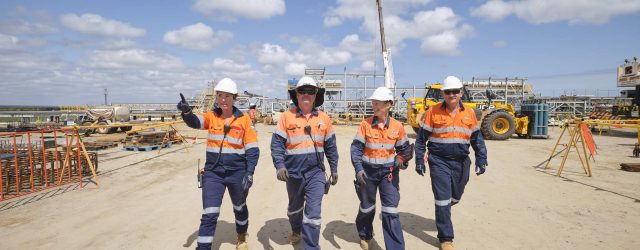Time to attract women to construct
Posted: 2nd September 2022
Posted in: Blog

Posted: 2nd September 2022
Posted in: Blog
Construction is one of Australia’s largest and most highly skilled industries, and it is also a bastion of male domination. Just 12 per cent of the construction workforce are women, meaning the industry is missing out on employing half the working population—and this is at a time when a massive 105,000 additional construction workers are needed to deliver Australia’s project pipeline.
The underutilised pool of talent that women represent is enormous. But in a classic case of chicken and egg, the ability to attract women is linked to the industry’s poor culture and its poor culture is, in large part, linked to the lack of women.
Construction is a hands on-profession and to acquire the skills needed, both blue collar and white-collar roles, you need to be taught on the job—which is usually by a man. The lack of successful role models is an obvious challenge preventing women from joining the industry or if they do, from staying.
Look closer and behind the wall of men is an industry characterised by high levels of conflict, and unacceptably high rates of mental illness and suicide. You are six times more likely to die from suicide than from a workplace accident if you are a construction worker in Australia. Construction records the second highest suicide rate of any industry in this country.
The cost of doing nothing is huge. A recent report appropriately titled Cost of Doing Nothing highlighted the need for a major overhaul of the construction industry with the industry’s workplace injuries, mental illness, long work hours and a lack of diversity costing the economy almost $8 billion annually.
Time for change!
Workers, both men and women, are saying they want more time for life. Flexible work practices with reasonable hours/days worked is not an unreasonable ask—in fact, it is a necessity in the modern world. So the industry finds itself questioning whether it is necessary to have every member of a team on site for ten hours a day. It is questioning the six-day work week for our workers. Government, industry and unions all recognise the golden opportunity greater flexibility presents in rebalancing the industry.
To kickstart the overhaul of the industry’s culture, the Construction Industry Culture Taskforce has developed a ground-breaking Culture Standard. The Culture Standard provides a framework for clients and contractors to work together to improve the conditions for workers in the construction industry. It proposes a set of standards be incorporated into procurement processes to improve worker time for life, wellbeing, and diversity and inclusion.
One of the key areas targeted by the Culture Standard is the gender pay gap. The construction industry has the widest gender pay gap of any industry and the Culture Standard seeks to address this. It calls on organisations to identify and disclose gender pay gaps across job roles and to develop and implement a plan to reduce these. Removing gender pay gaps will improve the ability of the industry to attract and retain women by providing an environment where women feel included, respected and rewarded for the contributions.
Imagine the impact of more women in construction. Imagine Bella teaching Bob the ropes. The industry would be better for it. It would be stronger, more productive and more collaborative.
If we could just have the gap in productivity growth between construction and other major industries, we could be saving $15 billion annually and, most importantly, improve the lives of workers. We could even deliver the record pipeline of projects within the confines of today’s constrained labour market.
Government, industry and unions all have a role to play—there can be no more bystanders. The Federal Government, as the nation’s major infrastructure client, must step off the sideline and run onto the field to leverage its buying power and really accelerate the change.
The Jobs and Skills Summit this September is a good place to start.
Opinion piece by Jon Davies, Chief Executive Officer, Australian Constructors Association
Originally posted via The Daily Telegraph 2 September 2022.